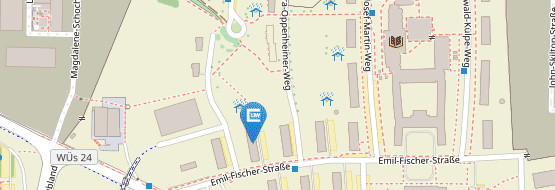LOFAR
Long-Wavelength Radio Astronomy
The Low Frequency Array (LOFAR), is a multi-purpose sensor array. Its main application is astronomy at low radio frequencies (10-240 MHz). LOFAR consists of an array of antenna fields (stations) distributed throughout the Netherlands and several neighbouring countries. The chair of astronomy at JMU is operating the LOFAR station DE602 in Unterweilenbach, near Garching. The signals recorded at the individual stations are combined interferometrically to form a virtual telescope the size of Europe which achieves a resolution orders of magnitude higher than possible with a single-dish radio telescope. LOFAR is a pan-European project: as of January 2024, the international community has founded the LOFAR ERIC (European Research Infrastructure) to provide a coordinating organization to optimize the joint exploitation and to maximize the science output of the LOFAR facilities.
At the chair of astronomy, we are using LOFAR to study the subarcsecondscale structure of active galaxies, providing the sharpest view of these sources in the still largely unexplored long-wavelength radio universe. We offer student thesis topics on big-data processing and software development for LOFAR as well as astrophysical studies on AGN jets, e.g., to constrain their particle content and magnetic-field structures.
More information:
D-LOFAR: https://www.glowconsortium.de/index.php/en/lofar-about-new
LOFAR-ERIC: https://www.lofar.eu
Recent Publications:
- de Gasperin et al. 2023, https://arxiv.org/pdf/2301.12724.pdf
- Kappes et al. 2022, https://arxiv.org/pdf/2205.11288.pdf
- Morabito et al. 2022, https://arxiv.org/pdf/2108.07283.pdf
Contact persons:
Prof. Dr. Matthias Kadler: matthias.kadler@uni-wuerzburg.de


